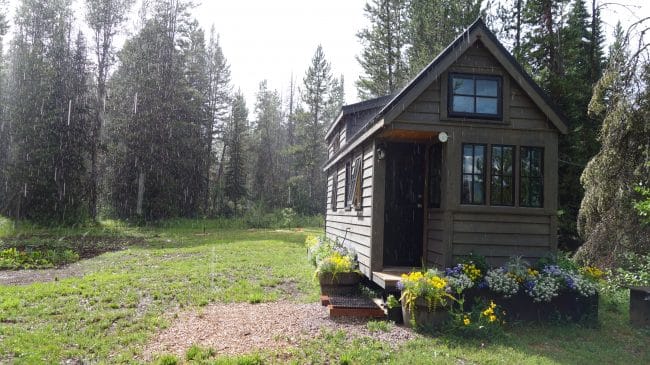Tiny houses—homes anywhere from 50 to 400 square feet in size—are becoming increasingly popular and can be attractive for students and others generally seeking lower rent in exchange for a smaller home.
What’s less appreciated is an emerging national trend toward state and local governments using tiny homes to reduce their homeless populations, often by leveraging public-private partnerships (PPPs) to construct some of these tiny home communities to serve low income and/or homeless populations.
For example, Panza, a local nonprofit that runs Quixote Village in Olympia, WA, pools together funding from the state and federal government, as well as private contributions from local organizations and individuals to provide tiny homes for the homeless. Panza uses a recovery-housing model that provides a drug and alcohol-free living environment for people in all stages of recovery and a Permanent Supportive Housing model that allows people to stay as they need, with staff and peer mentorship.
There are 30 tiny homes in Quixote Village; each 144-square foot unit includes a bed, closet, furniture, utility connections, WiFi, and a porch for storage. Residents cook, take showers, and dine in the community building, which is located just steps from the Village and staffed by a program manager and resident advocate.
Without substantial help from governments and private donors, the total cost to build the Village would have been just over $3 million, or $101,567 per unit, which includes everything from development to supplies and labor to permits—still substantially cheaper than providing studio apartments for low-income individuals around $200,000 per unit.
However, after government grants, donated land and services (from architects, civil engineers, and others), Panza actually paid under $88,000 per unit. Panza leases the land from Thurston for $1 a year in a 41-year agreement. The state gave $1.5 million for the project through the Department of Commerce’s Housing Trust; $700,000 came from the federal Community Development Block Grant program; $170,000 came from Thurston Counting document recording fees; and the Nisqually and Chehalis Tribes, the Boeing Employees’ Fund, and individual donors donated $215,000.
Panza has the legal responsibility of landlord duties to the residents. All residents pay 30 percent of their income (or $50 a month minimum) in rent and sign a lease agreement with Panza that outlines a code of conduct and other rules. The Village residents elect leaders, have regular meetings and operate in conjunction with Village staff in handling responsibilities for the upkeep of the property.
Working with the Washington State Department of Veteran’s Affairs and the Puget Sound Veterans Hope Center, Panza is looking to replicate Quixote and create Washington Soldiers Home and Colony in Orting, WA. The nonprofit hopes to break ground on the estimated $3.8 million project later this year.
In Mason County, another proposed site for veterans is in the city of Shelton, where 10 percent of the county’s inmates are veterans. The tiny houses are specifically intended just for veterans, as a measure to help avoid future incarceration.
Quixote Village is just one of 10 major communities throughout the country that provide tiny home villages for the homeless. Many encounter barriers to building tiny home communities, such as land use laws and funding.
Cites have already begun taking necessary steps to address tiny house villages in zoning codes. Seattle, WA, Portland, OR, and others have worked legislatively to build tiny home communities to shelter the homeless. The Portland City Council approved a resolution that officially designated Dignity Village as a campground that provides “transitional housing accommodations” for those who don’t have stable shelter. Seattle produced a set of zoning provisions that permit transitional encampment as a short-term use.
Different variations of tiny home communities can provide affordable, sustainable housing for low-income individuals. While not all tiny home communities can or should use a mix of public-private funds, Quixote Village is a good example of what can happen when private ingenuity and public resources are combined to tackle thorny problems. With homelessness as a major concern for many communities, local governments nationwide should closely examine their land use regulations to ensure that there are no unnecessary obstacles to creating similar PPP opportunities in their jurisdictions.
